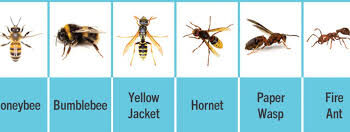Understanding the harmful effects of pesticides on pollinators and other beneficial insects and the importance of protecting them.
Introduction
Pesticides are chemicals used to kill pests, including insects, fungi, and weeds, in agriculture. They are commonly used to increase crop yields and protect plants from disease and insect damage. However, the use of pesticides has raised concerns about their impact on the environment, particularly on pollinators and other beneficial insects.
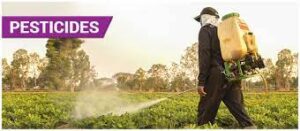
Pollinators are important to agriculture because they help fertilize crops, which increases yield and improves fruit quality. Insects, such as bees and butterflies, are the most important pollinators, and their populations have been declining in recent years. The decline in pollinator populations is partly due to the use of pesticides, which can harm or kill these insects. In this article, we will discuss the impact of pesticides on pollinators and other beneficial insects.
Types of Pesticides:
There are several types of pesticides used in agriculture, including insecticides, herbicides, and fungicides. Insecticides are used to kill insects that damage crops, such as aphids, caterpillars, and beetles. Herbicides are used to kill weeds, while fungicides are used to kill fungi that cause plant diseases.
Insecticides are the most problematic for pollinators and other beneficial insects. Some insecticides, such as neonicotinoids, are systemic, which means they are absorbed by the plant and spread throughout its tissues, including the nectar and pollen. When insects feed on the plant, they ingest the insecticide, which can harm or kill them.
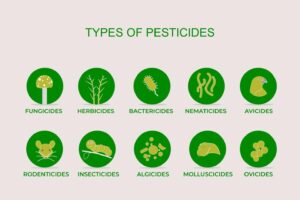
Impact of Pesticides on Pollinators:
Pollinators, particularly bees, are essential to agriculture. They help fertilize crops, which increases yield and improves fruit quality. However, the use of pesticides has led to a decline in pollinator populations. Pesticides can harm or kill bees and other pollinators in several ways.
Direct Contact : Some pesticides, such as organophosphates, can kill bees and other pollinators on contact. These pesticides are sprayed on crops and can drift onto nearby plants, where bees may be feeding. When bees come into contact with the pesticide, they can be killed or suffer other adverse effects, such as paralysis or disorientation.
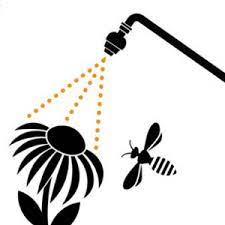
Toxicity: Pesticides can also be toxic to bees and other pollinators even at low levels. Neonicotinoids, for example, are highly toxic to bees, and even small amounts can cause harm. These pesticides are systemic and are absorbed by the plant, including the nectar and pollen. When bees feed on the plant, they ingest the pesticide, which can harm or kill them.
Sub-lethal Effects: Pesticides can also have sub-lethal effects on bees and other pollinators. Sub-lethal effects are those that do not kill the insect but can still harm it. For example, neonicotinoids can impair the ability of bees to navigate, forage, and communicate. These effects can reduce the fitness of the colony and lead to declines in pollinator populations.
Impact of Pesticides on Other Beneficial Insects
Pesticides not only impact pollinators but also other beneficial insects, such as predators and parasitoids. Predators, such as ladybirds and lacewings, feed on pest insects and help control their populations. Parasitoids, such as wasps, lay their eggs in pest insects, which eventually kill them. Pesticides can harm or kill these beneficial insects in several ways. Direct contact with pesticides can kill predators and parasitoids. Toxicity can also be a problem, as some pesticides are highly toxic to these insects. Sub-lethal effects can also reduce the fitness of these insects, making them less effective at controlling pest populations.
Alternatives to Pesticides: There are alternatives to pesticides that can help reduce the reliance on these chemicals and their impact on pollinators and other beneficial insects. Some of these alternatives include:
- Integrated Pest Management (IPM): IPM is a holistic approach to pest management that involves using a combination of techniques to control pests, including cultural, biological, and chemical controls. The aim of IPM is to reduce the use of pesticides by using non-chemical methods wherever possible.
- Crop Rotation: Crop rotation involves alternating crops in a field to reduce pest populations. This can help prevent the buildup of pests that are specific to a particular crop. Crop rotation can also help maintain soil health and reduce the need for fertilizers and pesticides.
- Biological Control: Biological control involves using natural enemies of pests, such as predators and parasitoids, to control their populations. This can be done by releasing these natural enemies into the field or by providing habitats for them to thrive.
- Habitat Restoration: Habitat restoration involves creating or restoring habitats for pollinators and other beneficial insects. This can include planting hedgerows, wildflowers, and other plants that provide food and shelter for these insects.
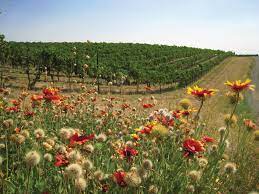
In recent years, the impact of pesticides on pollinators and other beneficial insects has become a major concern for scientists, policymakers, and the general public. Pollinators are critical to global food security, as they help to pollinate a wide range of crops, including fruits, vegetables, nuts, and oilseeds. According to the Food and Agriculture Organization of the United Nations (FAO), pollinators contribute to the production of approximately 75% of all globally important crops.
However, pollinators are facing numerous threats, including habitat loss, climate change, diseases, and exposure to pesticides. Pesticides are chemicals that are used to control pests, including insects, weeds, and fungi. These chemicals can be toxic to non-target organisms, including pollinators and other beneficial insects.
Conclusion:
The use of pesticides has raised concerns about their impact on pollinators and other beneficial insects. Pollinators are essential to agriculture, and their decline can have significant economic and environmental consequences. Pesticides can harm or kill pollinators and other beneficial insects, leading to declines in their populations. There are alternatives to pesticides, such as IPM, crop rotation, biological control, and habitat restoration, that can help reduce the impact of these chemicals on pollinators and other beneficial insects. These alternatives can also help maintain soil health, reduce the need for fertilizers and pesticides, and improve the overall health of the ecosystem. To protect pollinators and other beneficial insects, it is essential to adopt a holistic approach to pest management that considers the impact of pesticides on the environment and uses non-chemical methods wherever possible. By doing so, we can ensure that we continue to have healthy ecosystems that support agriculture and other essential services.






